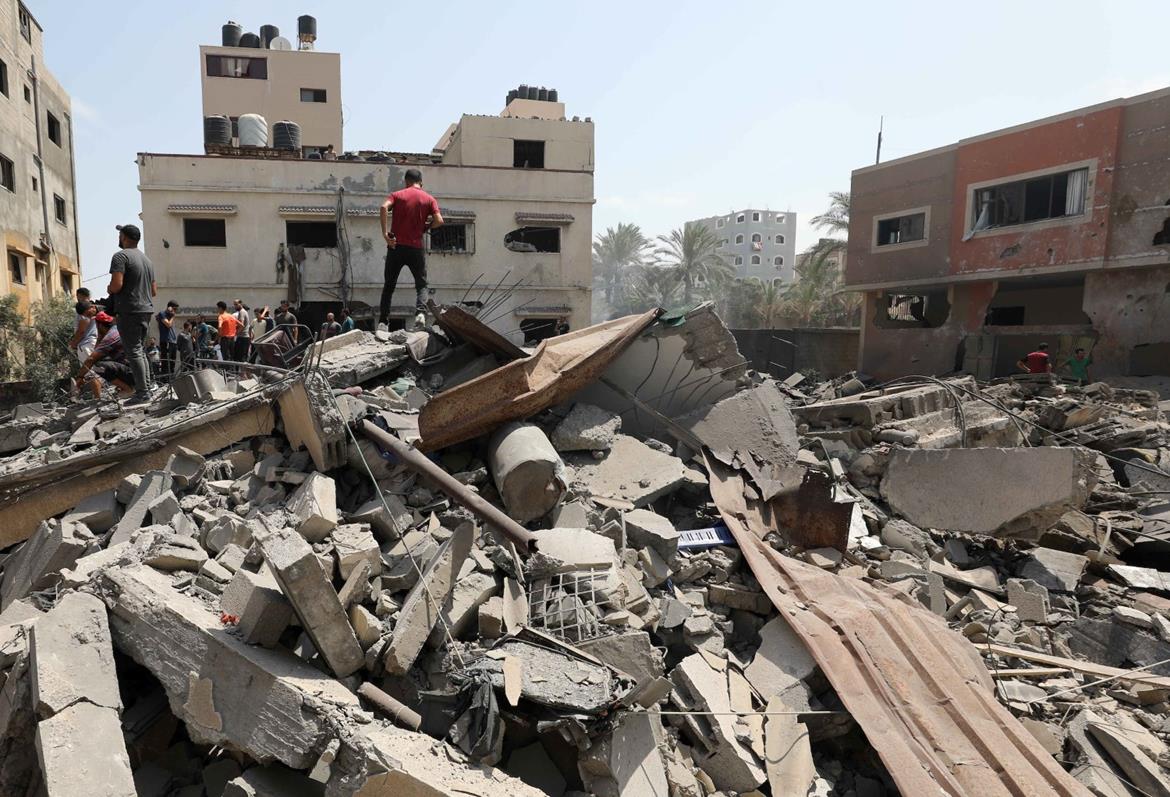The Gulf state had agreed to reconstruct the besieged city after the latest assaults by the Zionist state.
The Chairman of Qatar’s Gaza Reconstruction Committee Mohammed Al Emadi arrived in the besieged city late on Monday to monitor the rebuilding process and distribution of aid to Palestinian families.
According to Al Araby Al Jadeed, the Qatari envoy is set to meeting officials from Gaza’s ruling-Hamas movement along with other Palestinian factions.
His visit comes a week after the Qatari committee started distributing the monthly cash aid to Palesitnian families in the Gaza Strip in collaboration with the Qatar Fund for Development.
The cash assistance will benefit up to 100,000 families in need living in the besieged enclave, with Al-Emadi noting that each household will get a $100 grant.
It also comes weeks after the latest Israeli aggression in Gaza, which lasted for three days and ended on 5 August through a Qatar and Egypt-mediated ceasefire. The Zionist state killed 49 Palestinians including 17 children during the assaults.
Shortly after the truce, Qatar agreed to reconstruct houses in Gaza that were destroyed as the Qatar Red Crescent (QRCS) launched a more than one million dollar (QAR 4 million) campaign as part of an urgent relief response.
The QRCS said the aid is expected to benefit 60,250 people in the besieged city.
Undersecretary of the Ministry of Public Works and Housing in Gaza Naji Sarhan had previously told Al Araby Al Jadeed that Israel completely destroyed 18 housing units during the attacks.
Another 71 housing units became inhabitable as 1,675 others were partially destroyed. The damages, Sarhan noted, could amount to at least five million US dollars in addition to indirect damages.
Previous attacks on Gaza
Last week, Sarhan said Qatar’s reconstruction efforts in the besieged city following last year’s deadly Israeli offensive is 40% complete. He added that the city is in need of $3 billion in order to complete the development and reconstruction process.
Last year, the Israeli regime launched deadly air strikes on the city, killing at least 260 Palestinians, including 66 children. The assaults ended following a Qatar-Egypt ceasefire at the time.
Israel partially damaged 70,000 housing units in total during the 2014, 2021, and 2022 bombardments of Gaza combined, costing the city more than $800 million.
The Palestinian city has become known as the world’s largest open-air prison due to an air, land and sea blockade imposed by Israel in 2007.
Israel withholds fuel from the power plant and also controls up to 90% of water in the besieged enclave. Sources and figures show just 10.5% Palestinians in Gaza have access to safe drinking water.
More than 96% of water in Gaza’s aquifers are not safe for consumption, forcing Palestinians to buy water at inflated prices despite their full right to access it for free.
The poverty rate in Gaza has increased from 40% in 2005 to 56% in 2020.
Trucks carrying good to the strip constantly face obstacles under the apartheid state with key crossings being closed at unexpected times.
Before the embargo, at least 30,000 Palestinians were able to travel through the Erez crossing on a monthly basis, however, the number decreased by 85% as of 2020. This is also the case for the Rafah crossing with Egypt.
Palestinians in Gaza in need of medical care also face difficulties getting health assistance outside the city.
On Monday, four sick Palestinians, including three children, died in Gaza after the Israeli regime stopped them from leaving the Strip to receive treatment.







